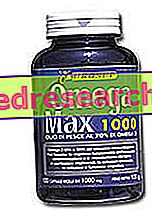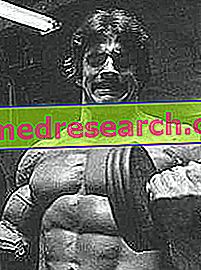Protein
Proteins are polymers composed of amino acids (aa - monomers) bound by peptide bonds and hydrogen; from the chemical point of view, aa are quaternary molecules (basically composed of: carbon - C, hydrogen - H, oxygen - O and nitrogen - N) which, by structuring thousands of biologically different proteins, are indispensable for the survival of the human organism.

Proteins perform many functions; among the most important we mention: structural, bioregulatory, immune, transport, cellular, energetic, hormonal, neurotransmission, etc. The intake of proteins with the diet therefore has the function of complying with all the biological needs of the organism, which differ above all in: age, sex, physical activity, body structure and muscle mass, special pathological or physiological conditions. An adult organism, healthy and sedentary, can survive with 0.75 grams (g) every kilogram (kg) of weight (physiological, not overweight or underweight), while a growing subject needs about 1.5 g / kg. Sportsmen, athletes, pregnant and sick women need a more detailed estimate than that obtainable through the tables referring to the general population.
Lean proteins, what are they?
In the nutritional field it is common to hear about "lean proteins"; in reality, it is an improperly attributed denomination which, better to say, refers to mainly protein-rich foods with low fat content.
Lean proteins, what are they?
Lean proteins are associated above all with lean meats from rabbit (rabbit) or poultry (mainly chicken and turkey). Lean calf (young bovine), horse, some fishery products (molluscs, crustaceans and fish), egg white and skimmed yogurt are also frequently consumed.
On the contrary, those of legumes associated with cereals (a technique useful to improve their biological value) are less used and lean proteins deriving from game, frogs, land snails and ostrich muscle are almost totally ignored.
Table of "lean proteins" (values for 100g of edible portion)
| Food | Protein | Lipids | Cholesterol |
| Anchovies | 16.8 | 2.6 | 61.0 |
| Lobster | 16.0 | 1.9 | 70.0 |
| Squid | 12.6 | 1.7 | 64.0 |
| Horse | 19.8 | 6.8 | 61.0 |
| Grouper | 17.0 | 2.0 | - |
| Deer | 21.8 | 0.8 | - |
| Corvina | 20.0 | 0.8 | 75.0 |
| Whole rabbit | 19.9 | 4.3 | 53.0 |
| Cozza | 11.7 | 2.7 | 121 |
| Daino | 21.0 | 1.2 | - |
| Guinea fowl chest | 25.8 | 1.9 | 32.0 |
| Crayfish | 13.6 | 0.6 | 150 |
| Canned crab | 18.1 | 0.9 | 101 |
| Pike | 18.7 | 0.6 | - |
| Snail | 12.9 | 1.7 | - |
| Cod | 17.0 | 0.3 | 50.0 |
| Pier | 17.4 | 0.3 | 52.0 |
| murmurs | 18.0 | 1.9 | 45.0 |
| Oyster | 10.2 | 0.9 | 150 |
| Pagello | 21.0 | 1.9 | 35.0 |
| Palombo | 16.0 | 1.2 | - |
| Whole chicken | 19.4 | 3.6 | 75.0 |
| Octopus | 10.6 | 1.0 | 72.0 |
| Frog | 15.5 | 0.2 | 50.0 |
| Race | 14.2 | 0.9 | - |
| Rhombus | 16.3 | 1.3 | - |
| Sheepshead | - | 1.2 | 65.0 |
| Redfish | 19.0 | 0.4 | 67.0 |
| Sepia | 14 | 1.5 | 64 |
| Sole | 16.9 | 1.4 | 25.0 |
| Sea bass | 16.5 | 1.5 | 48.0 |
| Ostrich | 20.9 | 0.9 | 57.0 |
| Whole turkey | 21.9 | 2.4 | 63.0 |
| Skim yogurt | 3.3 | 0.9 | 2.0 |
| Calf | 20.7 | 2.7 | 71.0 |
| Clam | 10.2 | 2.5 | - |
| Egg - Egg white | 10.7 | traces | 0.0 |
As can be seen from the above values, almost all lean proteins have a very low cholesterol intake, with the exception of some molluscs and some crustaceans (in the table in red).
They have been deliberately excluded: tofu, soy milk and low-fat milk flakes, as the lipid profile differs too much from that of meat foods, and for the same reason it was decided NOT to include legumes due to the excessive importance of glucidic profile; legumes, especially if associated with cereals, boast good protein content and quality ... but these are in any case not comparable to those of lean meat, fishery products and egg white.



